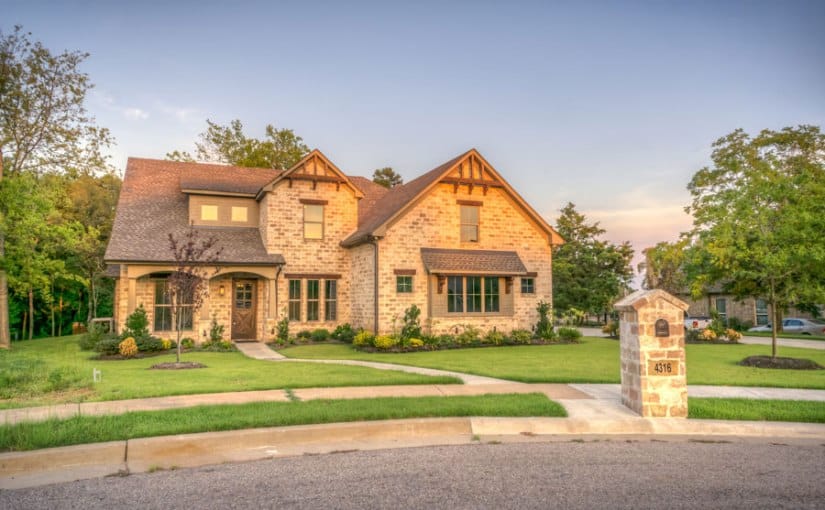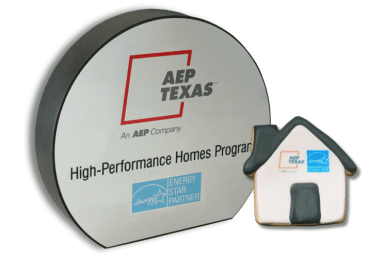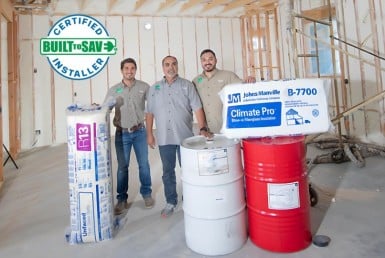Demand a Right-Sized A/C Unit for Your Home. Bigger Is Only Better for the Contractor.
When it gets hot in Texas, it gets really hot. We have a climate in which air conditioning is required practically year round. So, when you’re in the process of buying or building a new home, it’s important to make sure your A/C unit is correctly sized and matched to the home’s specifications. Why is this important? Simply put, an A/C unit accounts for about 50% of your home’s utility bill, but more critically—it accounts for 100% of the home’s comfort. A home with an oversized unit will not only consume more electricity than needed, its occupants will be plagued by uncomfortable clammy interiors with other long-term operational problems from poor humidity control. If you want to make sure you are not a victim of the “Bigger Is Better” sales pitch, here’s what you should know.
Understanding What Determines Right-Sizing of Air Conditioning Systems
In the U.S., the Air Conditioning Contractor’s Association of America (ACCA) produced a protocol for calculating the heating and cooling loads of a home in order to determine the correct A/C system needed for a specific space. Known as a “Manual J,” this protocol takes a scientific and mathematical approach to accurately match the size of the A/C with the home’s required load calculations. A Manual J is absolutely more accurate than the rules of thumb that many contractors use, such as “1 ton of air conditioning capacity for every 600 square feet of living space.” These rules of thumb—especially bad rules of thumb—grossly oversize the A/C unit.
While a “Manual J” is required by code officials in order for a builder to get a building permit, the sad truth is that it is not their job to ensure the Manual J is correct. Even the builder may not know if the Manual J developed for his or her home is correct. Too often, everyone trusts the HVAC contractor who is the one responsible for developing the Manual J, which determines the correct size of the air conditioning unit. A/C units are sold by the ton—the bigger the unit, the more costly the system. One ton can cost about $1000, so you can see that making sure the A/C unit is properly sized can have huge payoffs—even before you learn about all the benefits you will enjoy and all the headaches you will avoid when the A/C is properly sized.
A home’s heating and cooling load is determined by its design. Many factors are considered, room-to-room, when calculating these loads using special software: square footage, type of windows, type of insulation, and climate zone are only a few examples. It is a time-consuming job and probably why most HVAC contractors use rules of thumb instead, or worse, just use the default information on their software, which most likely does not reflect your home’s specific characteristics. These “inaccurate defaults” result in “inaccurate outputs” and produce an inaccurate Manual J that incorrectly requires an oversized A/C unit. It may be good for the HVAC contractor, but not for you.
Why You Don’t Want an Oversized HVAC System
Believe it or not, 40% of all US contractors admit that they are likely to oversize the equipment as a result of skipping Manual J calculations. They assume that a bigger A/C system will be able to accommodate any need and therefore should work fine. In other words, they believe that bigger is better. It’s also much easier for them to guess or use rules of thumb instead of taking the time to accurately do the required Manuals J, S, T, and D.
Aside from paying too much for an oversized A/C initially, there are other operational problems to be aware of if your A/C is too big.
More Expensive: At $1000 per ton, a larger (capacity) A/C system costs more to buy. Like poor “miles per gallon” of a car with an inefficient larger engine, an over-sized A/C will get poor efficiency and your utility bills will be much higher than necessary.
Increased System Wear: To be efficient, an air conditioner should run for longer, even cycles rather than for short bursts of cool air. An oversized unit will short cycle – this means it will start up and shut down more often. The constant “on and off” operation will increase the wear and tear of your equipment, resulting in a shorter life span and expensive repairs.
Poor Circulation: A/C units that are bigger than necessary do not run long enough to create good air circulation. A common problem is that some rooms will be too cold and others will be too hot. A right-sized unit will run for a longer period of time, allowing for good air circulation that helps to maintain even room temperatures.
Improper Humidity Levels: With a right-sized air conditioning system, the longer running time actually helps to remove the humidity in your home. On the other hand, with a larger system in which air circulation is low, your home will feel sticky and clammy. Indeed, your humidity levels may be higher, so you crank the system up. This will only add to the humidity problem and increase your electricity costs, as well.
Moisture and Mold Issues: An over-sized A/C unit does a poor job of removing humidity out of the home because it cools the space quickly and shuts off before it can do so. The long-term result is a variety of moisture and mold issues throughout the home.
Ensure Your New Home Has the Right-Sized HVAC Equipment
The good news is that there is a way to be sure that your A/C unit is sized correctly to produce extended runtimes, control humidity, eliminate moisture problems, provide even temperatures, and use less energy—it’s called a BUILT TO SAVE™ certification for
new homes.
A home that receives a BUILT TO SAVE™ certificate has been inspected and tested by an independent, third-party energy rater who guarantees that the home has complied with the requirements of the program. And one of the key components of the BUILT TO SAVE™ program is that the home’s HVAC system be right-sized and properly installed.
The Manual J documents provided for homes enrolled in the BUILT TO SAVE™ program are collected in the pre-construction stage of the program and studied by an energy rater who compares the data entered in the Manual J report with data from the home’s floor plans and other data collected from on-site inspections. A home with an oversized A/C unit cannot qualify for the BUILT TO SAVE™ program. Don’t take anyone’s word that your A/C is properly sized. Ask for guaranteed proof—ask to see the BUILT TO SAVE™ certificate.
Follow us on instagram for a daily dose of beautiful new homes in the Rio Grande Valley! Click here: @RGVNewHomes
© 2017 RGV New Homes Guide & Across Media Marketing, LLC.
Unauthorized use and/or duplication of this material without express and written permission from this site’s author and/or owner is strictly prohibited. Excerpts and links may be used, provided that full and clear credit is given to RGV New Homes Guide with appropriate and specific direction to the original content.





